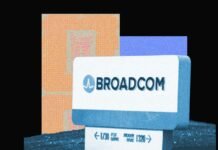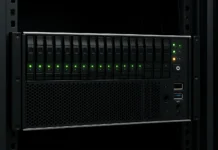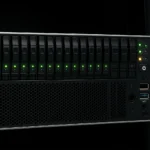Now that Touch ‘n Go has entered the multi-lane fast flow (MLFF) arena – as it was bound to do given its near-monopoly of toll payments – highway concessionaires now have a partner to help implement a barrier-less, high-speed toll collection system. But it won’t be all smooth sailing, as this time around the said concessionaires have the ability to shop around for a solution that works for them.
One highway operator that has decided to go its own way is PLUS Malaysia, which is set to trial its automatic number plate recognition (ANPR) system on the North-South Highway this month, using its JustGo app for payments. Now, this obviously begs the question – does this mean there will be multiple competing MLFF toll collection systems? And if so, does that mean us Malaysians will have to download a separate app for each of our country’s numerous highways?
Before we get ahead of ourselves, let’s have a look at how each system operates. The MLFF solution that Touch ‘n Go is currently piloting on the Kemuning-Shah Alam Highway (LKSA) retains the RFID tags the company currently uses, but adds a new reader and a high-powered antenna from Star Systems International (SSI). This enables the system to read tags more accurately and reliably – addressing the main drawback of the current RFID setup.
This is supported by an ANPR camera and a 3D lidar sensor as a fallback, helping to detect the cars that manage to slip through the cracks. According to SSI, the pilot system – which uses data from a nearby toll plaza for validation – achieved 100% vehicle detection and has read over 99.98% of existing TnG RFID tags.
The biggest advantage of TnG’s system is that it integrates a payment method that already exists – the RFID and eWallet combination that is used for the vast majority of highways here. Customers will not need to get new tags or install a new application, sidestepping the hassle of adopting a new system. However, it remains to be seen if TnG’s solution works as well as it (or at least its partner) claims, given the issues that have dogged the current RFID system for toll payments.
PLUS’ ANPR-based toll collection system
Meanwhile, PLUS’ system only uses ANPR technology and reportedly works with the cameras already installed at its toll booths for surveillance, dispensing with the need for RFID tags, readers and antennas. All that’s required is a legible number plate which, let’s be real, is easier said than done in Malaysia.
The JustGo app is needed to register for the system, but unlike the Touch ‘n Go eWallet app, this is not an electronic wallet in and of itself – users will need to link it with their payment method of their choice, including credit/debit cards and, crucially, the TnG eWallet itself. Both apps feature electronic know your customer (eKYC) technology for account verification, preventing unauthorised transactions.
The method chosen by PLUS requires a bit more effort on the user’s part but should be less costly for the company to implement, as it won’t have to pay for expensive RFID equipment. The ability to use a TnG eWallet as one of the payment methods also eliminates having to keep track of multiple accounts.
We should point out that the ANPR system is currently being trialled with barriers still in place, so it’s unclear if the technology is able to be scaled up to a full-blown MLFF setup with multiple lanes of fast-moving traffic.
It’s possible to game a purely ANPR-based system – just ask the owner of this Toyota Fortuner
Relying solely on number plates for recognition also opens up the system to the possibility of unscrupulous motorists gaming it – witness the recent case of one road user manipulating their plate number to evade numerous fines from AWAS speed cameras, simply by removing a single letter. As for the downside to users, well, it’s yet another app to download…
Which brings us to our main concern – if each of the 33 highway concessionaires choose to implement their own competing MLFF system, does that mean we’ll all have to download 33 separate apps? We certainly hope not, and we expect the government to intervene before the situation gets out of hand.
To be honest, we’re not surprised that TnG and PLUS have decided to go their separate ways, given that the two companies have a history of sparring when it comes to toll payment methods. In 2018, not long after TnG revealed its RFID system, PLUS announced its plan to introduce a competing product – only for TnG parent CIMB to seek an injunction blocking the move, citing a breach of contract. Initially, PLUS said its RFID system did not run afoul of any agreement, but it abandoned the project soon after anyway.
Even now, having eventually adopted TnG’s RFID setup, PLUS is continuing to drag its feet with the implementation of the PayDirect system, which enables toll fares to be deducted directly from a user’s eWallet. Even the works ministry has had to step in, instructing PLUS to enable PayDirect on the North-South Highway by this month. Which MLFF system are you supporting? Let us know in the comments.
The post Touch ‘n Go RFID MLFF vs PLUS JustGo ANPR – Malaysian highways to have competing toll systems? appeared first on Paul Tan's Automotive News.






































